Table of Contents
Embarking on a culinary journey through Morocco unveils a captivating tapestry of flavors and cultural heritage. The food from Morocco, influenced by Berber, Arab, Andalusian, and Mediterranean traditions, offers a delightful fusion of tastes. From beloved traditional dishes to tantalizing street cuisine, Moroccan food is a treasure trove of mouthwatering delights that showcase the richness of its food culture. Let’s dive into this diverse and vibrant world of Moroccan cuisine.
Top Ingredients of Moroccan Cuisine
In Moroccan cuisine, a rich tapestry of flavors is woven together by expertly blending a variety of ingredients. Here is a list of the most commonly used ingredients that are the cornerstones of Moroccan culinary traditions:
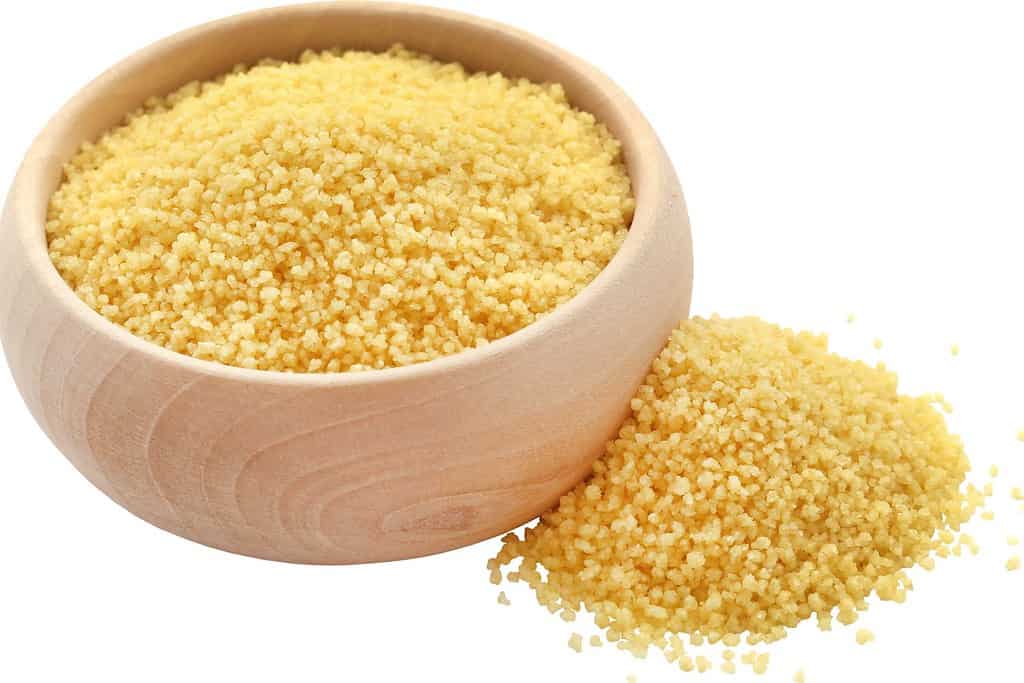
Couscous: A staple in Moroccan cuisine, couscous is often served with a variety of dishes and can be prepared in different ways, such as Couscous Royale (couscous with mixed meats and vegetables) or Couscous with Seven Vegetables.
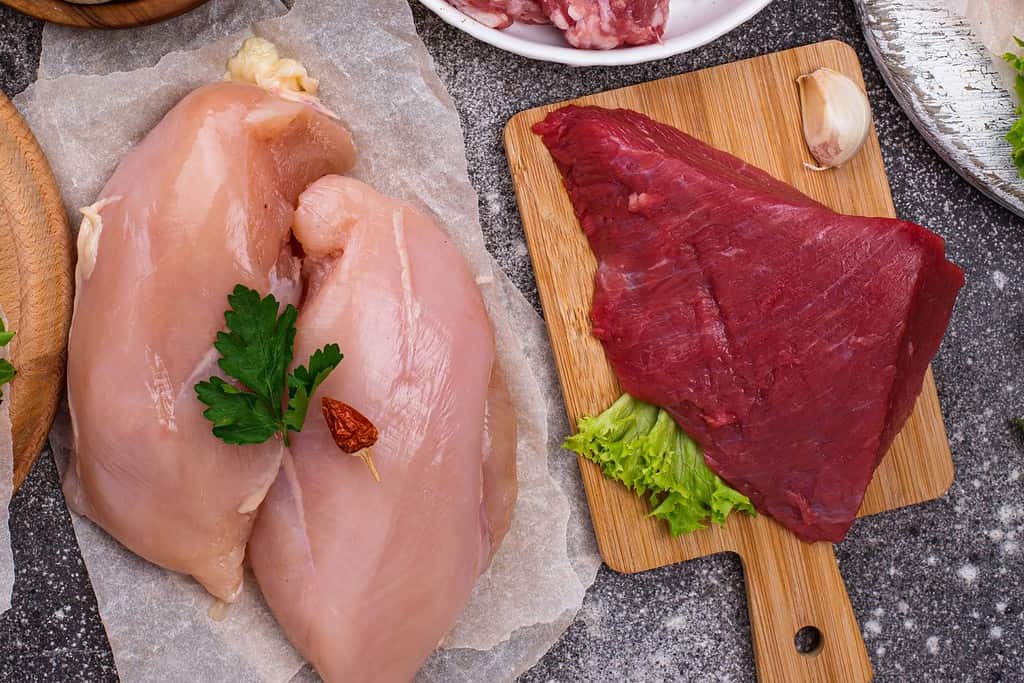
Lamb and Chicken: Lamb and chicken are popular meats in Morocco and are essential ingredients in traditional dishes like Tagine, Mechoui, and Bastila.
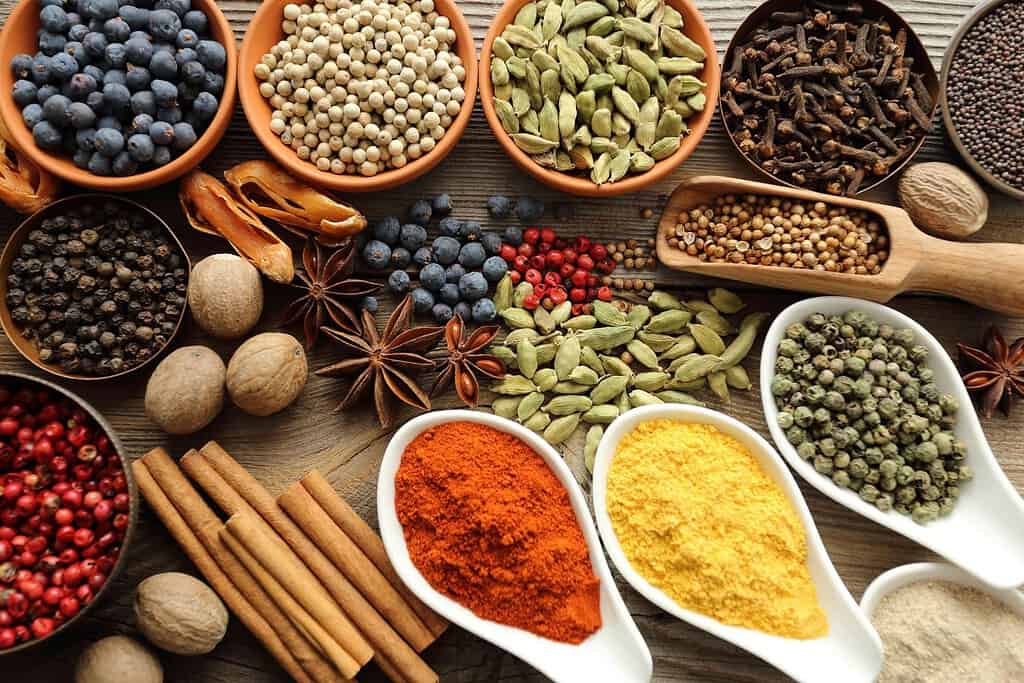
Spices: Moroccan cuisine is renowned for its use of aromatic spices, including cumin, coriander, cinnamon, paprika, and saffron, which infuse depth and richness into Moroccan dishes.
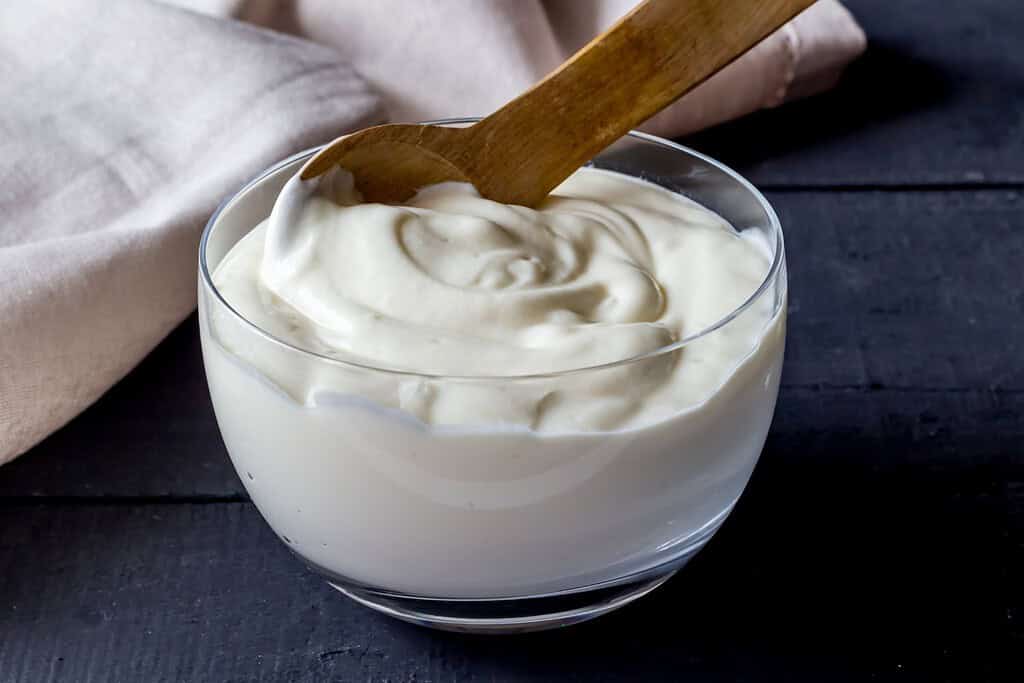
Yogurt: Yogurt plays a significant role in Moroccan cooking and is utilized in savory dishes, sauces, and beverages like Lassi.
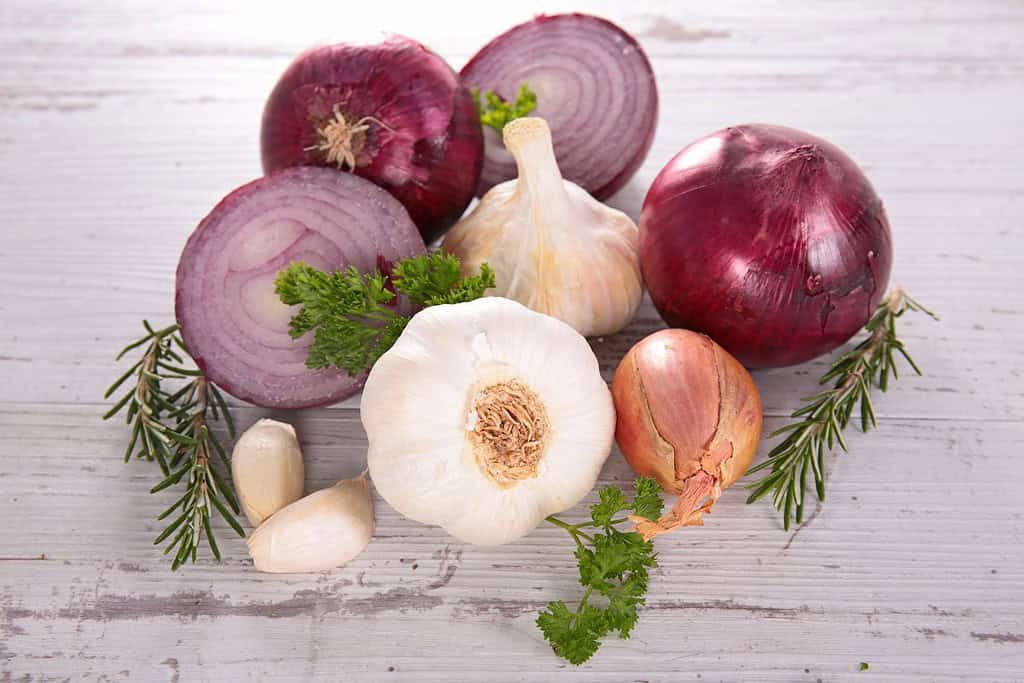
Onions and Garlic: These two ingredients form the flavor base of many Moroccan dishes, providing a savory foundation for various culinary creations.
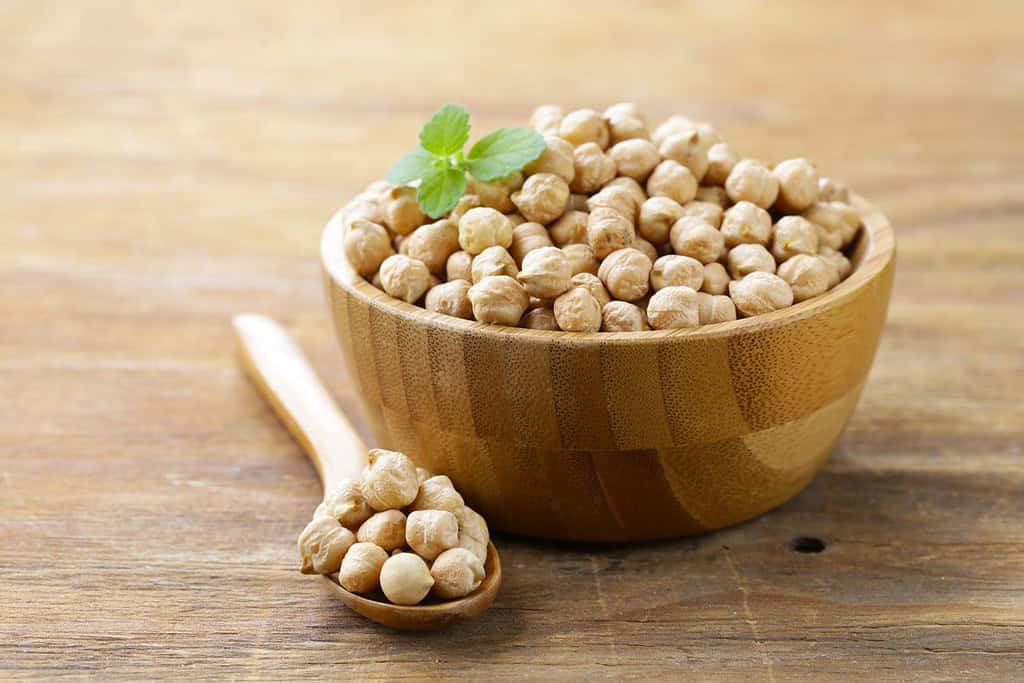
Chickpeas: Chickpeas are a versatile ingredient in Moroccan cuisine, appearing in dishes such as Harira (soup), couscous, and salads, providing a creamy and hearty texture.
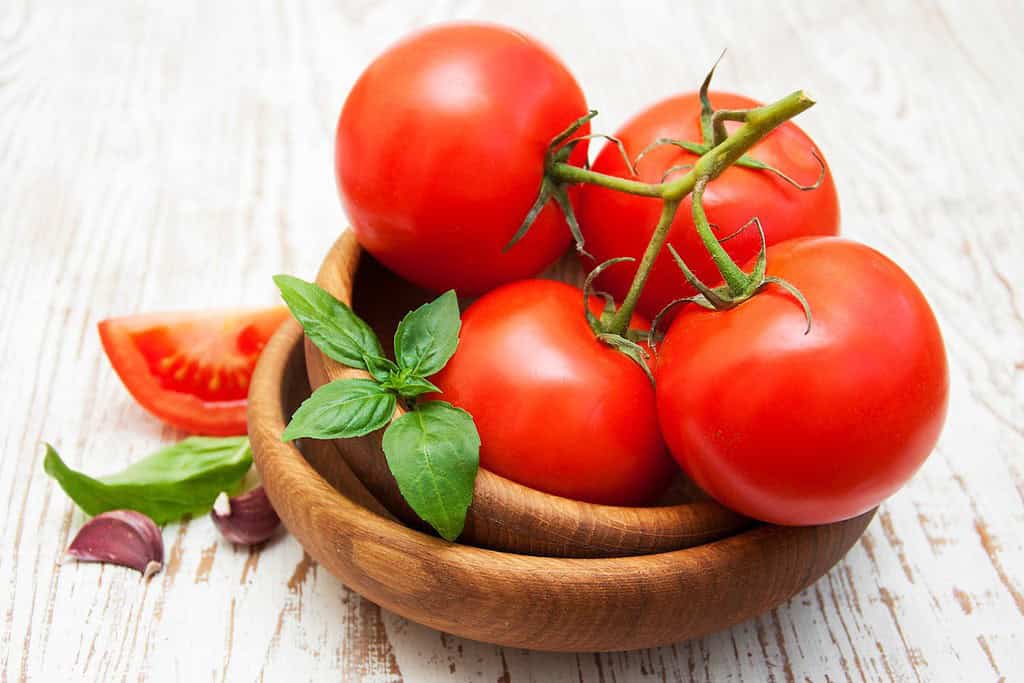
Tomatoes: Tomatoes are frequently used in Moroccan cooking to add a burst of freshness and acidity to tagines, stews, and salads.
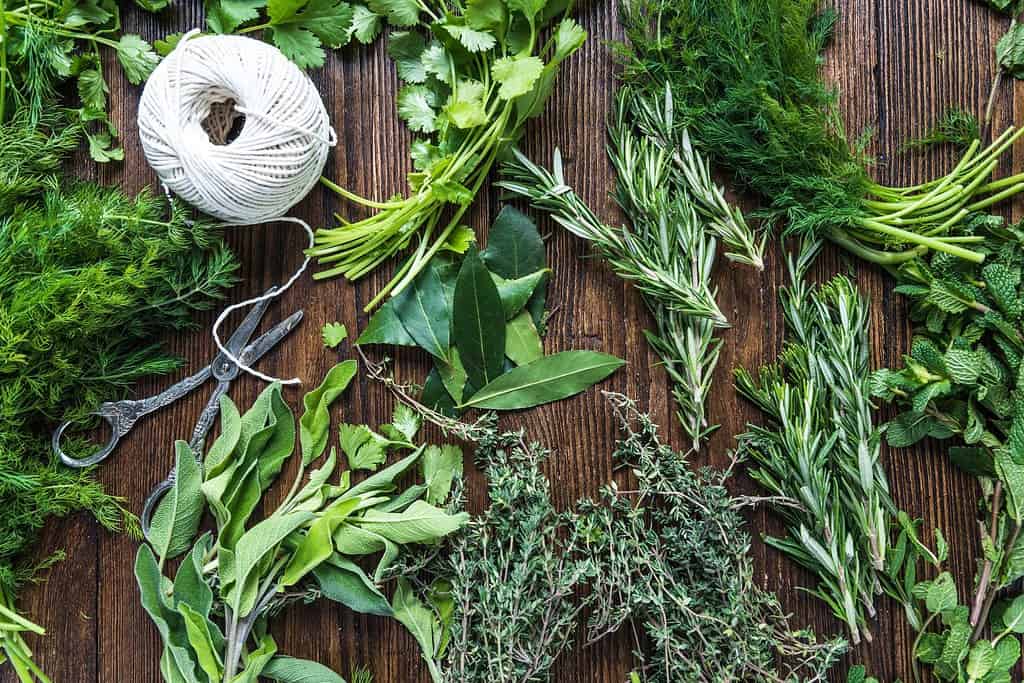
Fresh Herbs: Fresh herbs like cilantro and parsley are widely used in Moroccan cuisine to provide a burst of flavor and freshness to dishes, often as garnishes.
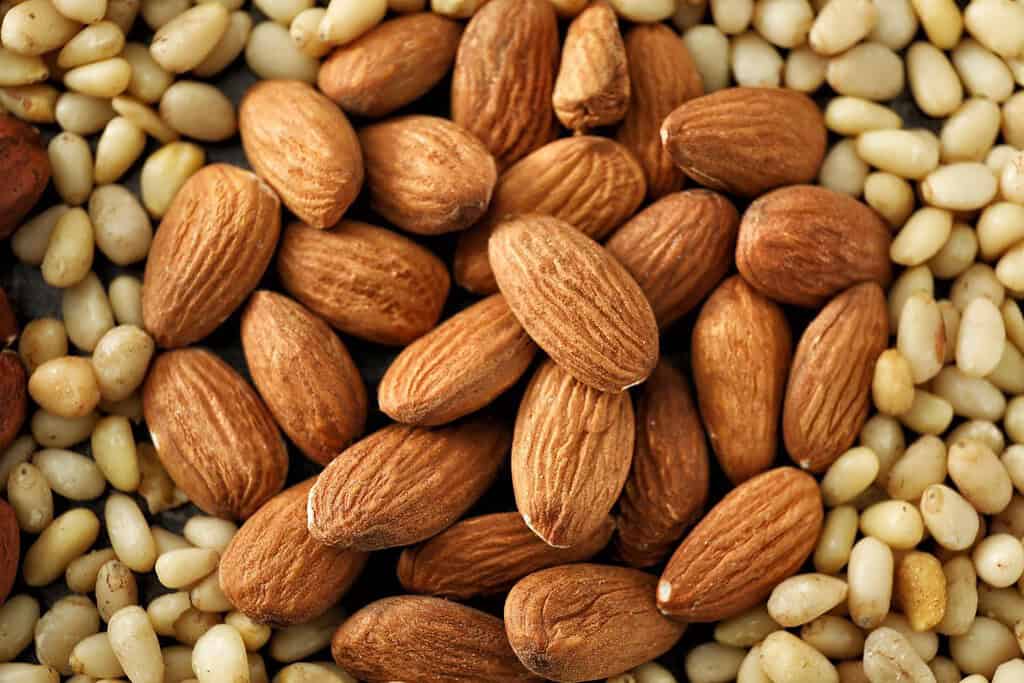
Almonds: Almonds are a common addition to Moroccan recipes, adding a delightful crunch and richness to tagines, pastries, and desserts.
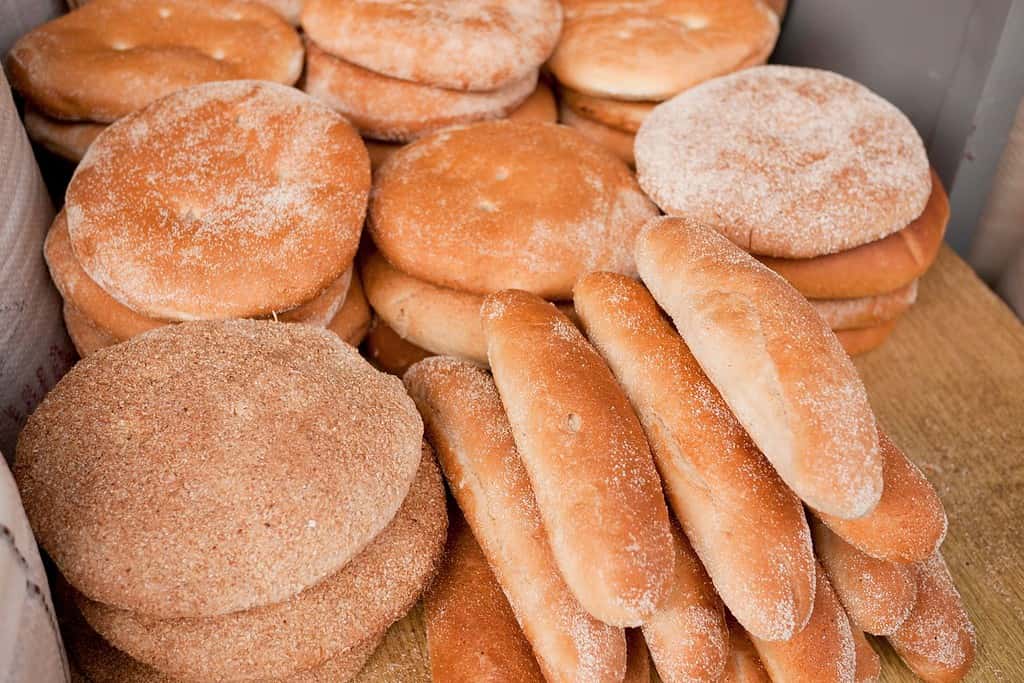
Moroccan Bread (Khobz): Bread is an essential element of Moroccan meals, and Khobz is the most common type, served alongside various dishes to scoop up sauces and stews.
These ingredients, along with a myriad of regional herbs, spices, and other local produce, contribute to the diverse and enchanting flavors that characterize Moroccan cuisine.
The diversity of food from Moroccan cuisine
Moroccan cuisine offers a captivating variety of flavors and dishes that reflect the nation’s rich history and cultural diversity. Influenced by Berber, Arab, Andalusian, and Mediterranean culinary traditions, Moroccan food provides a unique blend of ingredients and techniques. One of the most renowned dishes is Tagine, a flavorful stew cooked in a special clay pot, combining succulent meats, aromatic spices, and a medley of vegetables. This dish symbolizes Moroccan hospitality and is often served at festive gatherings. Another beloved Moroccan specialty is Couscous, steamed granules of semolina wheat, typically paired with a rich and fragrant stew made with ingredients like lamb, chicken, or vegetables.
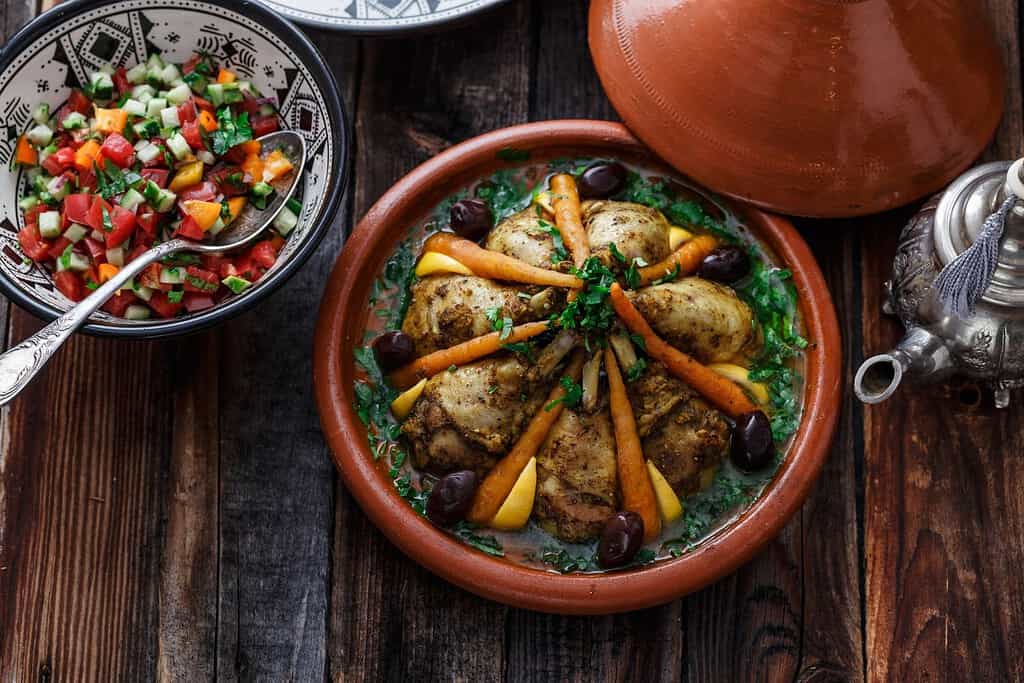
The heartiness of Moroccan cuisine is exemplified in its grilled skewers, known as Brochettes, prepared with various meats like lamb, beef, or chicken, marinated in a delightful blend of spices. The country’s love for soups is evident in Harira, a hearty soup made with tomatoes, lentils, chickpeas, and a blend of spices, often enjoyed during Ramadan. For a vegetarian option, Vegetable Tagine stands out, featuring a medley of vegetables slow-cooked with aromatic herbs and spices. Another popular choice is Pastilla, a sweet and savory pie filled with layers of flaky pastry, pigeon meat, almonds, and a dusting of powdered sugar and cinnamon, offering a delightful contrast of flavors.
Satisfying the sweet tooth, Moroccan cuisine presents delightful desserts like Baklava, layers of filo pastry filled with nuts and sweetened with honey or syrup. The diversity of Moroccan food is further exhibited in its regional specialties, with each area showcasing distinct recipes and culinary techniques. Whether indulging in the succulent flavors of Brochettes or savoring the comforting taste of Harira, exploring the variety of Moroccan cuisine is an adventure in cultural richness and gastronomic pleasure.
While visiting beautiful Morocco, you can try all of the best recipes from Moroccan cuisine. We have available a wide range of Tours in Morocco that you can choose to visit the country.
Best Foods in Morocco
Moroccan cuisine offers a delightful array of dishes that tantalize the taste buds with their rich flavors and cultural significance. While it’s challenging to single out a definitive list of the “best” foods, some dishes stand out as particularly beloved and iconic in Moroccan cuisine.
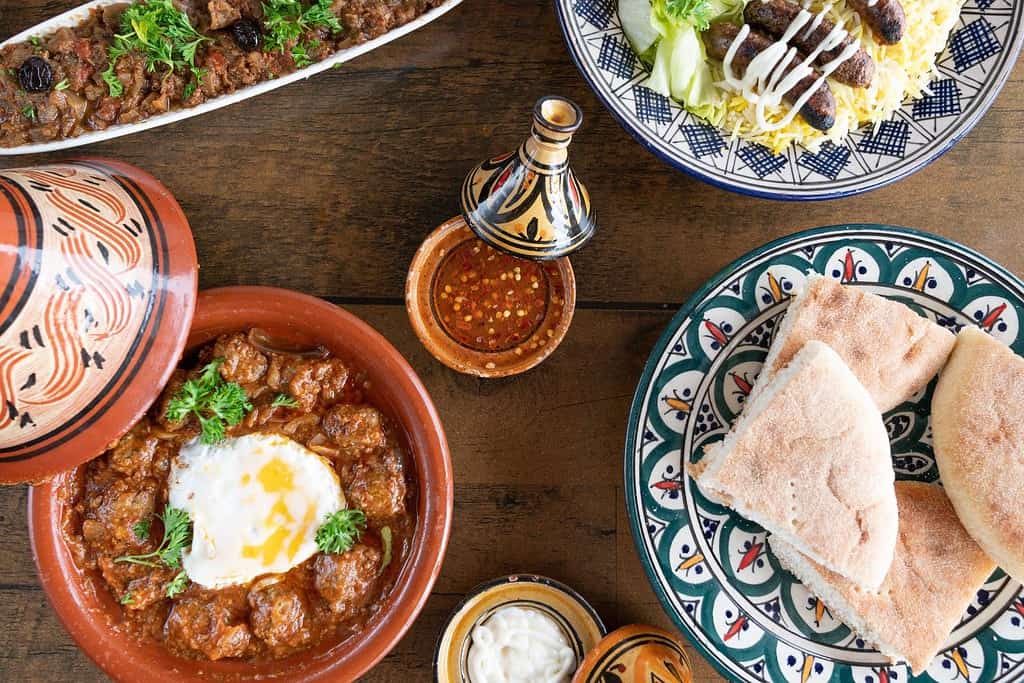
Moroccan cuisine is known for its creative use of spices, such as cumin, coriander, cardamom, turmeric, cloves, cinnamon, ginger, garlic, chilies, saffron, black pepper, and mint for its rich and flavorful dishes. The result is a harmonious blend of aromatic spices and vibrant herbs that make Moroccan food truly exceptional.
Most famous Moroccan foods
Here are the top most famous foods in Morocco that have garnered recognition both locally and internationally:
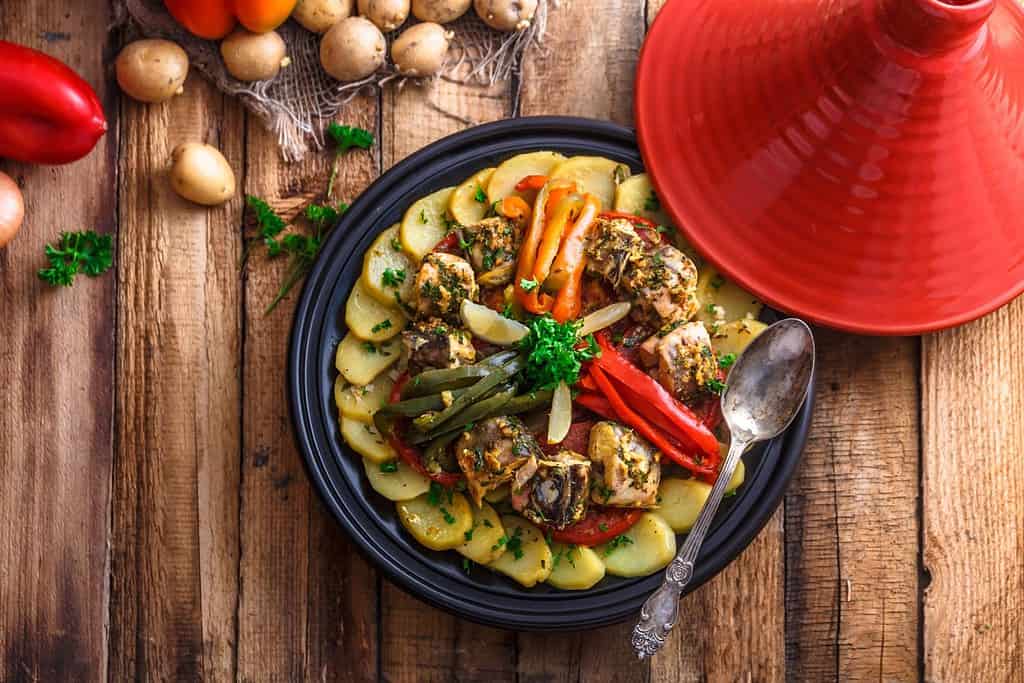
Tagine: Widely considered the national dish of Morocco, Tagine is a culinary masterpiece that features slow-cooked meat (often lamb, chicken, or beef) with a mix of aromatic spices, preserved lemons, and olives. This dish exemplifies the perfect balance of savory and tangy flavors, making it a favorite at gatherings and special occasions.
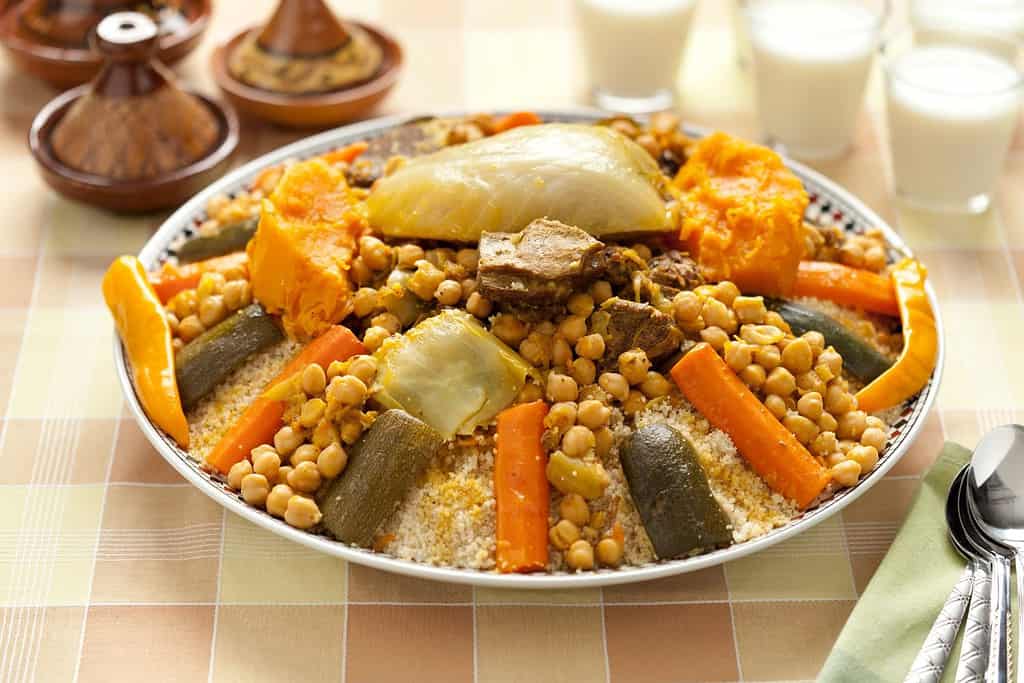
Couscous: A symbol of Moroccan hospitality, couscous is a fluffy semolina pasta typically steamed over a flavorful broth and served with a variety of vegetables and tender meat, such as lamb or chicken. The combination of textures and spices creates a harmonious explosion of flavors.
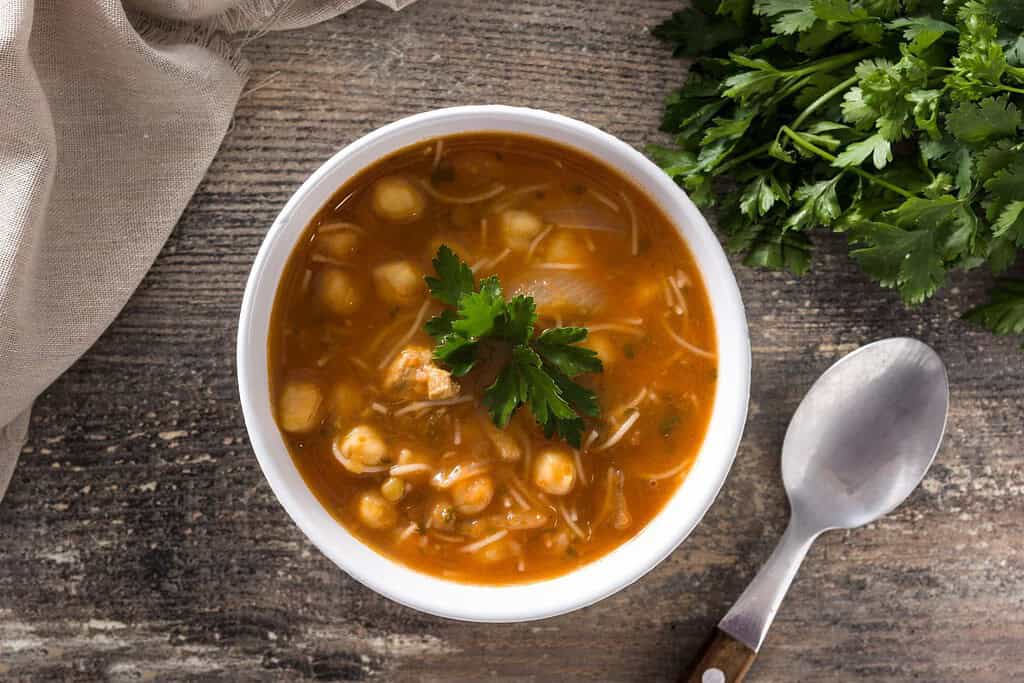
Harira: A staple in Moroccan households, Harira is a rich and flavorful soup prepared with tomatoes, lentils, chickpeas, and a medley of aromatic spices. It’s typically enjoyed with dates and flatbread, and the variations in recipes across regions add to its allure.

Briouat: Briouat is a delectable pastry that comes in various fillings, such as minced meat, seafood, or almonds. Deep-fried until crispy, Briouat is enjoyed as an appetizer or snack, often accompanied by mint tea or spicy harissa sauce.
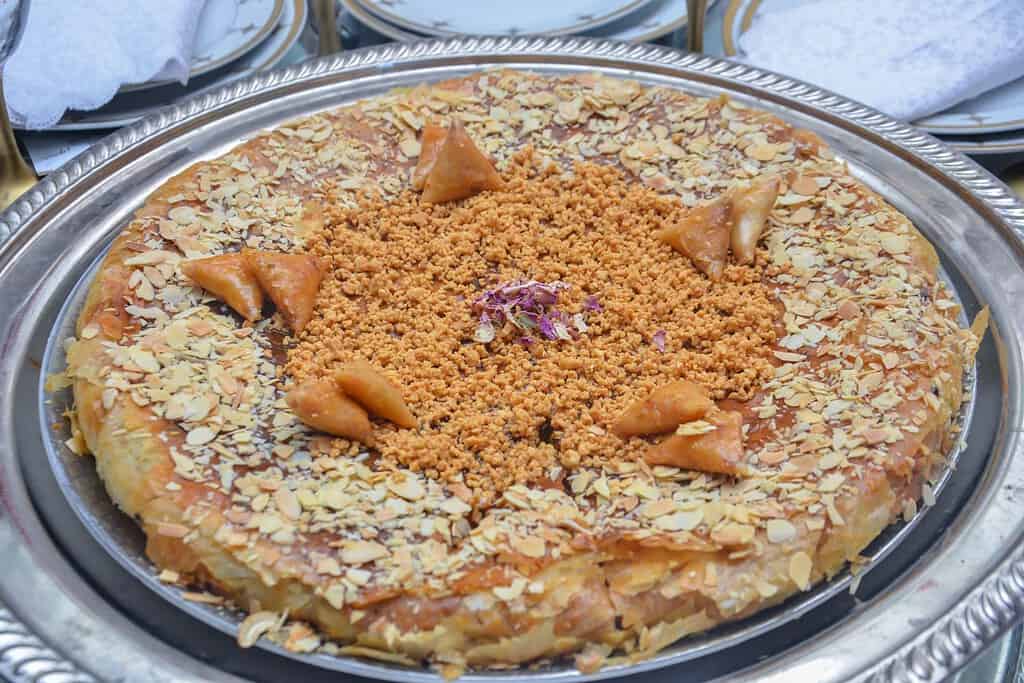
Pastilla: This savory pastry is filled with a mixture of pigeon meat, almonds, and spices, and it’s topped with powdered sugar and cinnamon. Pastilla’s distinctive taste and presentation make it a favorite during special occasions and celebrations.
These renowned Moroccan dishes showcase the richness and diversity of the country’s culinary heritage, making them popular not only within Morocco but also among food enthusiasts around the world.
Moroccan Desserts
Moroccan desserts provide a delightful conclusion to a satisfying meal, showcasing a fusion of sweet flavors and exquisite textures. These desserts hold a significant place in Moroccan culture and are often enjoyed during celebrations, festivals, and special occasions. Some popular Moroccan desserts include:
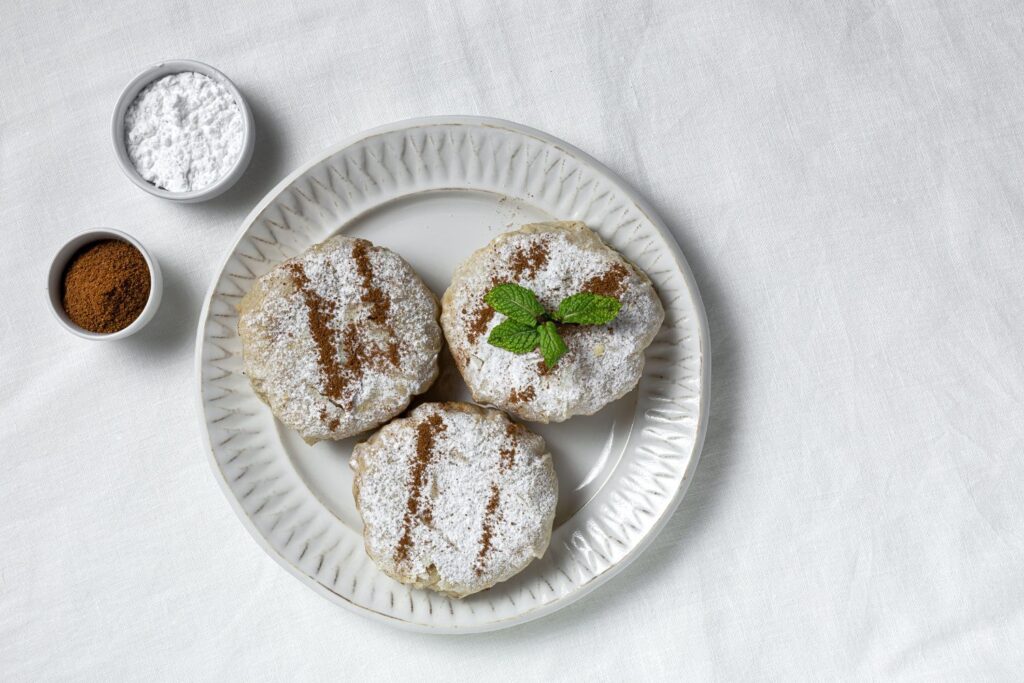
Pastilla (B’stilla): This savory-sweet pastry is a Moroccan delicacy that combines layers of thin pastry dough filled with a mixture of pigeon or chicken meat, almonds, spices, and a touch of sugar and cinnamon. It is baked to perfection and dusted with powdered sugar and cinnamon, offering a unique blend of flavors.
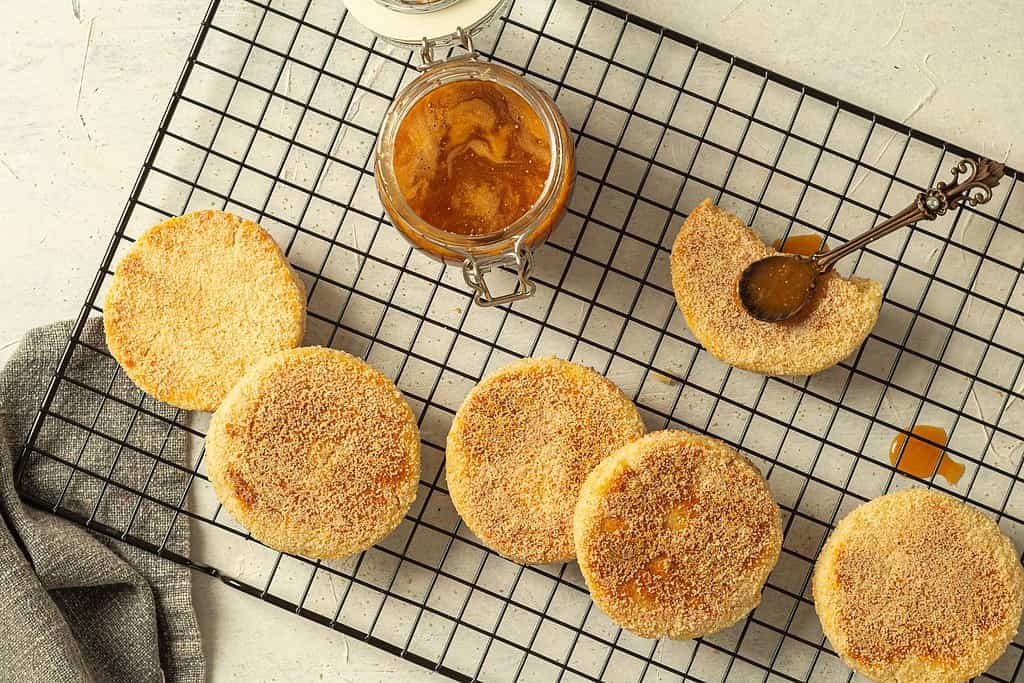
Moroccan Honey Cakes (Harcha): Harcha is a delicious semolina cake cooked on a griddle and sweetened with honey. It has a slightly crispy exterior and a soft, crumbly interior. Harcha is often enjoyed with a spread of butter and honey.
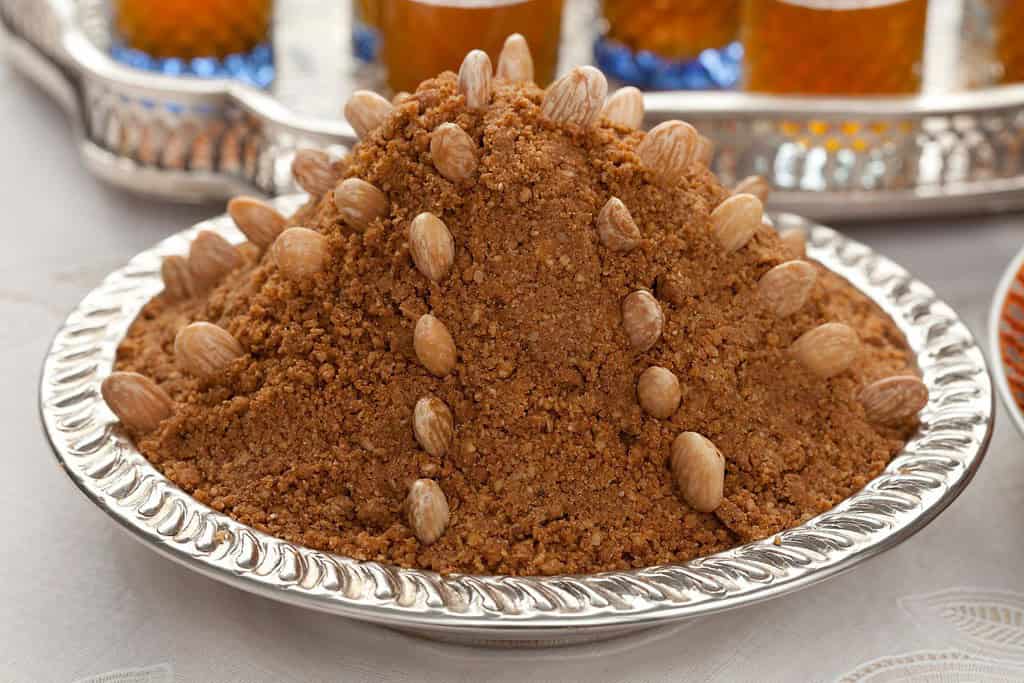
Sellou: Also known as Sfouf or Zmita, Sellou is a nutritious Moroccan sweet treat made from ground almonds, sesame seeds, roasted flour, and a blend of aromatic spices. It’s traditionally prepared during Ramadan and served as an energy-packed snack.
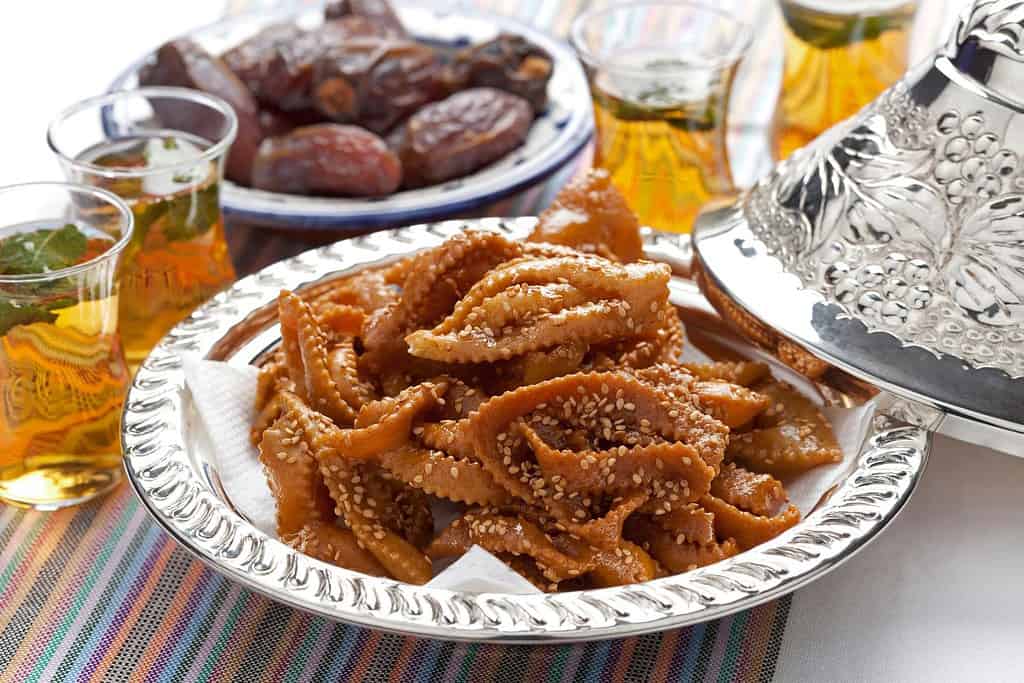
Chebakia: Chebakia is a popular Moroccan pastry shaped like rose petals, deep-fried until golden brown, and then soaked in a honey and orange blossom water syrup. It’s a sweet and fragrant treat often enjoyed during Ramadan and special occasions.
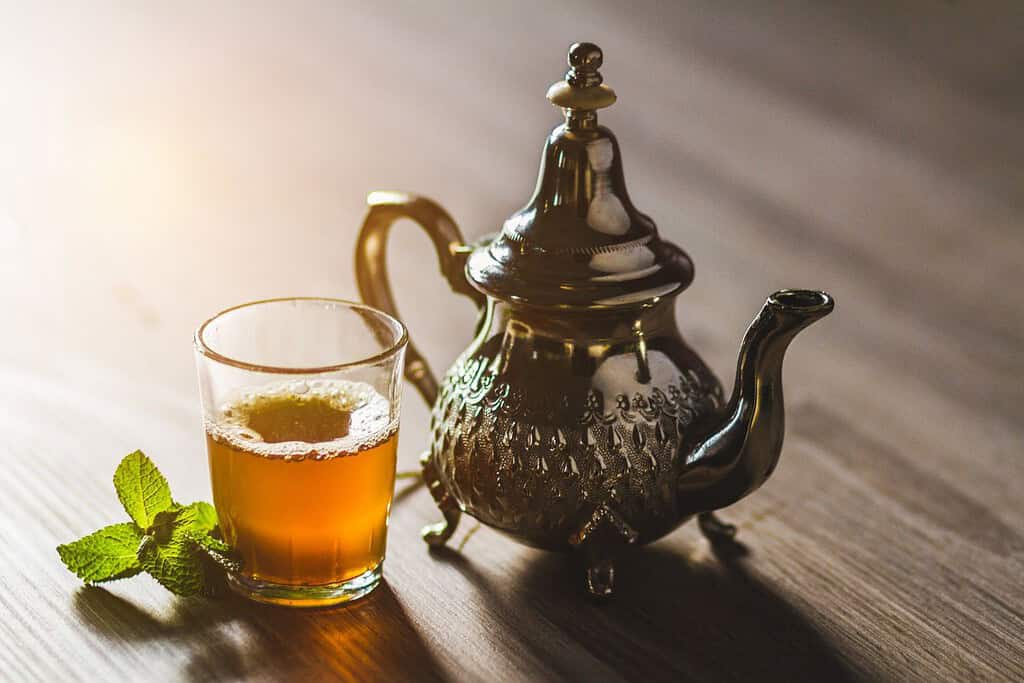
Moroccan Mint Tea: While not a dessert in the traditional sense, Moroccan Mint Tea is an integral part of Moroccan hospitality and often served alongside desserts. This refreshing tea is made with green tea leaves, fresh mint leaves, sugar, and hot water, creating a sweet and aromatic beverage that complements Moroccan sweets perfectly.
The culture behind Moroccan food
The culture behind Moroccan food is deeply rooted in tradition, hospitality, and community. Moroccan cuisine reflects the country’s rich history and diverse cultural influences, blending elements from Berber, Arab, Andalusian, and Mediterranean culinary traditions. Food holds significant cultural importance in Morocco and plays a central role in social gatherings, family events, and religious celebrations.
Hospitality is a cornerstone of Moroccan culture, and sharing food with guests is a deeply ingrained tradition. When visitors arrive at a Moroccan home, they are warmly welcomed with an array of delicious dishes, reflecting the host’s generosity and desire to make their guests feel at home. Meals are often communal affairs, with everyone seated around a shared platter, emphasizing the importance of togetherness and solidarity in Moroccan culture.
Also, read:
Rabat, Marrakech, and Casablanca
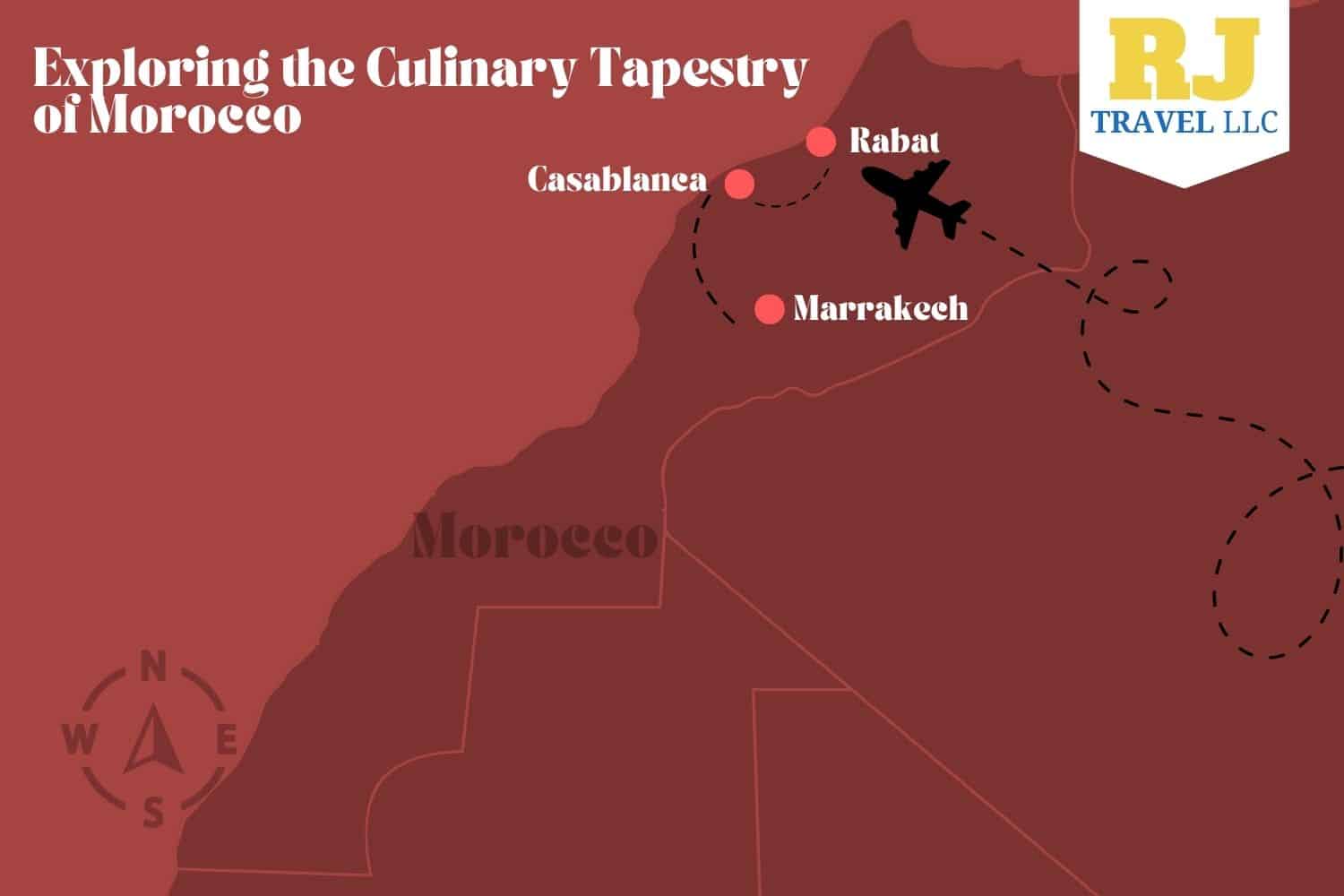
Embark on a gastronomic journey through Rabat, Marrakech, and Casablanca, and immerse yourself in the captivating flavors that have been crafted and cherished for generations in Morocco. Let the traditional foods of each city paint a flavorful picture of Moroccan culinary artistry, inviting you to savor the unique delights of these remarkable regions.
Within the enchanting world of Moroccan cuisine, each region brings its own distinct flavors and culinary traditions. Let’s explore the culinary diversity of Rabat, Marrakech, and Casablanca and discover the delightful differences in their traditional foods.
The differences in dishes from each Moroccan city can be attributed to a combination of factors, including geography, historical influences, and the majority ethnic group residing in each region. Morocco’s diverse landscape and geographical features, such as the Atlas Mountains, coastal areas, and fertile plains, have influenced the availability of certain ingredients and agricultural practices in different regions. This, in turn, has contributed to variations in the types of dishes that have evolved in each city.
Rabat’s Mechoui Lamb showcases succulent roasted lamb, seasoned to perfection with Moroccan spices and herbs, offering a taste of authentic Moroccan hospitality. Marrakech’s Tagine Royale takes a flavorful twist on tagine cooking, combining tender meats, dried fruits, almonds, and a blend of aromatic spices for a delightful taste experience. Casablanca’s Seafood Pastilla offers a unique take on Moroccan cuisine, featuring layers of flaky pastry filled with a medley of fresh seafood, herbs, and a hint of saffron, pleasing the palate with its coastal influence.
For example, in Rabat, being the capital and a cultural hub of Morocco, the culinary scene is more diverse and influenced by a mix of traditions from various regions. Marrakech, with its historical significance and location in the heart of Morocco, has culinary influences from both the north and south, leading to distinct dishes like Tagine Royale. In Casablanca, the coastal location and cosmopolitan atmosphere contribute to a fusion of flavors and seafood-centric dishes.
Comparing the three cities, Rabat offers a diverse range of dishes influenced by its cosmopolitan nature, Marrakech highlights hearty tagine preparations, and Casablanca tantalizes with innovative seafood creations. Each city showcases its own culinary identity, adding depth to the multifaceted and rich tapestry of Moroccan cuisine.
Rabat
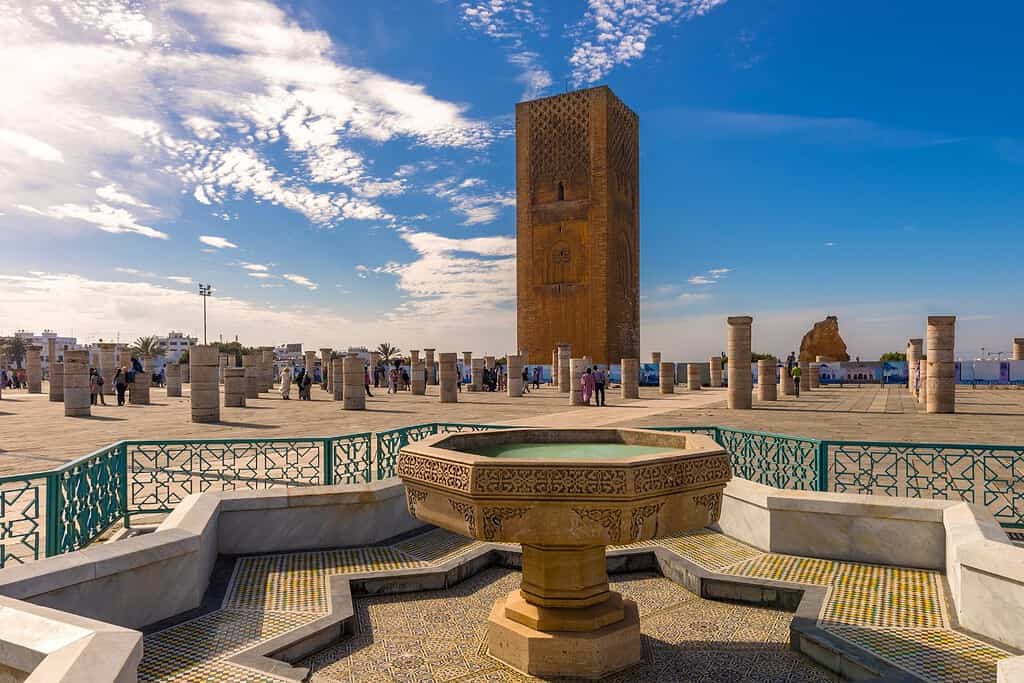
Beginning our culinary exploration in Rabat, the capital city of Morocco, we are greeted with a vibrant food scene that reflects the country’s rich culinary heritage. The city offers a mix of traditional Moroccan dishes and international influences. As we venture through the bustling markets and street food stalls, the aroma of freshly baked Moroccan bread and fragrant spices fills the air. Rabat’s food culture is a fusion of flavors, showcasing a diverse array of dishes to delight every palate.
Famous food from Rabat
- Couscous Royale: A classic Moroccan dish featuring steamed couscous served with a flavorful mix of meats, including lamb, chicken, and merguez sausages, along with a medley of vegetables.
- Pastilla: A savory pastry filled with layers of spiced meat (typically pigeon or chicken), almonds, and a delicate blend of spices, all wrapped in thin, flaky pastry and dusted with powdered sugar and cinnamon.
- Tajine: A slow-cooked stew typically made with chicken, lamb, or beef, and a variety of vegetables, seasoned with aromatic Moroccan spices and cooked in a clay pot called a “tajine.”
- Briouat: Flaky pastry parcels stuffed with a mixture of minced meat, herbs, and spices, often deep-fried to crispy perfection.
- Harira: A hearty soup made with tomatoes, lentils, chickpeas, and a blend of herbs and spices, often enjoyed during Ramadan.
- Mechoui: Spit-roasted whole lamb, seasoned with a flavorful spice rub, resulting in tender and succulent meat.
- M’hanncha: A coiled pastry resembling a snake, filled with almonds, sugar, and cinnamon, and often served as a dessert.
Marrakech
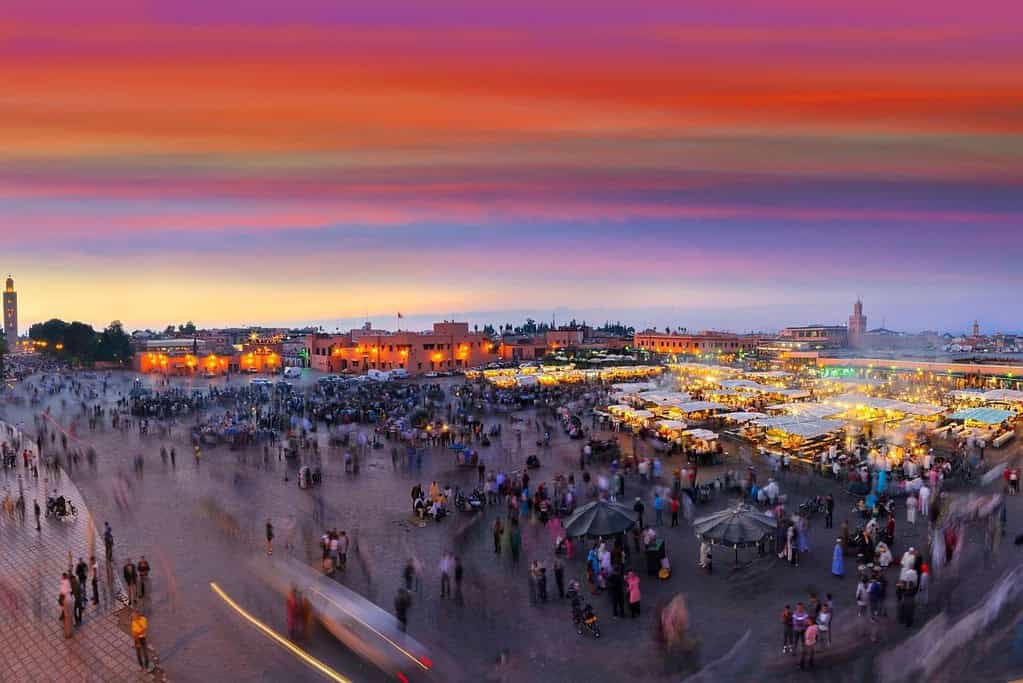
Continuing our journey to Marrakech, a city renowned for its vibrant culinary traditions, we find ourselves immersed in the flavors of traditional Moroccan cuisine, known for its tagines, couscous, and street food delights. Marrakech cuisine celebrates a rich tapestry of flavors and the use of locally sourced ingredients, making it a unique gastronomic experience.
Famous food from Marrakech
- Tagine: A quintessential Moroccan dish prepared with various combinations of meats, vegetables, and a blend of aromatic spices, slow-cooked to perfection in a cone-shaped clay pot.
- Couscous with Seven Vegetables: A vegetarian delight featuring fluffy couscous served with a colorful medley of vegetables and a rich tomato-based sauce.
- Kefta Tagine: Flavorful meatballs made from ground lamb or beef, simmered in a spiced tomato sauce and topped with eggs.
- Moroccan Pancakes (Msemen): Square-shaped, flaky Moroccan pancakes often served with honey or jam for breakfast or as a snack.
- Snail Soup (Babbouche): A popular street food specialty featuring snails simmered in a fragrant broth with various herbs and spices.
- Tanjiya: A slow-cooked, savory stew made with succulent cuts of meat, preserved lemon, and olives, served in a clay pot.
- Sellou: A traditional Moroccan energy bar made from ground almonds, sesame seeds, honey, and spices, often enjoyed during special occasions.
Casablanca
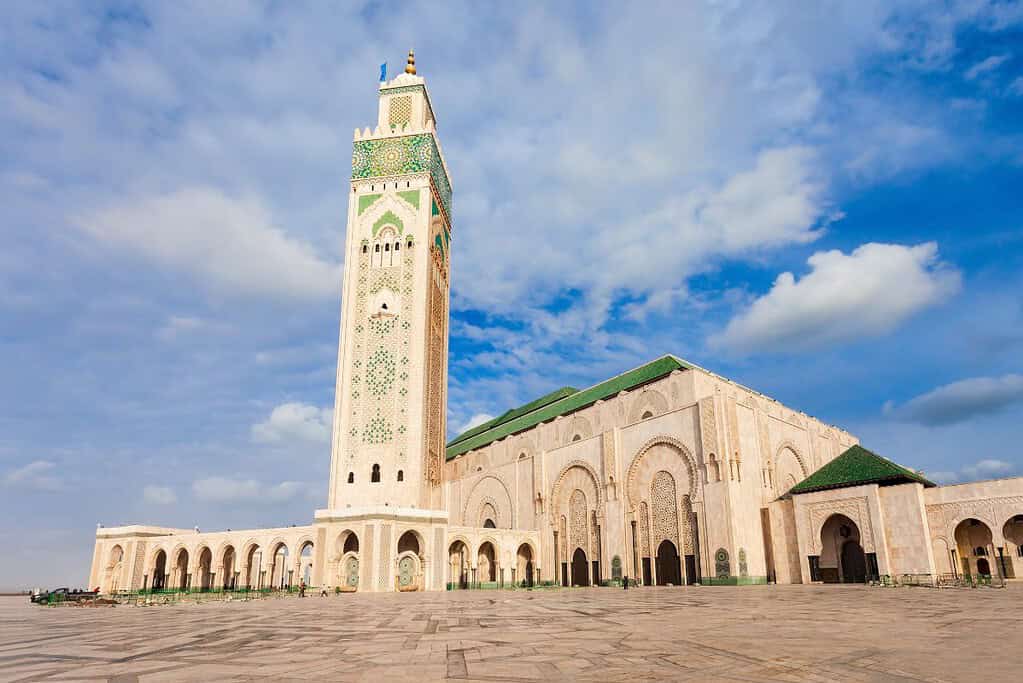
Our culinary journey concludes in Casablanca, a city steeped in history and renowned for its diverse and flavorful dishes. Casablanca cuisine is characterized by its creative use of spices and ingredients, resulting in dishes that captivate the taste buds with a burst of flavors.
Famous food from Casablanca
- Fish Tagine: A delightful seafood tagine featuring fresh fish, herbs, and a blend of spices, often cooked with tomatoes and preserved lemons.
- Bisteeya: A savory pie with layers of flaky pastry, filled with a mixture of shredded chicken or pigeon, almonds, and aromatic spices, dusted with powdered sugar and cinnamon.
- Grilled Sardines: Fresh sardines marinated in a mixture of spices and herbs, then grilled to perfection, a beloved seafood dish in Casablanca.
- Harira Soup: A rich and hearty soup made with tomatoes, lentils, chickpeas, and a blend of spices, often served as a starter during Ramadan.
- Rfissa: A traditional dish made with shredded msemen (Moroccan pancakes), chicken, lentils, and a fragrant sauce, often enjoyed on special occasions.
- Mechoui Lamb Sandwich: Tender, spit-roasted lamb served in a crusty baguette with a drizzle of harissa sauce, a popular street food option.
- M’hanncha: A coiled pastry filled with almonds, sugar, and cinnamon, a sweet treat enjoyed as a dessert or with mint tea.
Book Your Trip to Morocco Today!
Embark on an unforgettable journey and explore the allure of Morocco through our exclusive tours.
More About Morocco
[the-post-grid id=”50400″ title=”Morocco Main page”]
